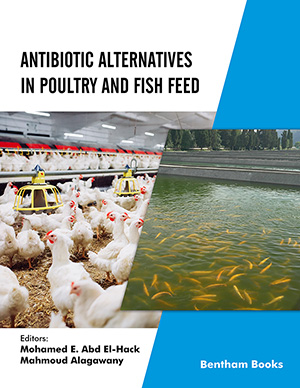Abstract
Background: The health benefits of dietary fibers have been proved for a long time. The importance of microbiota has been identified in human health and there is a growing interest to study the factors affecting it.
Objective: This systematic review aimed to investigate the impact of fiber and whole grains (WGs) on human gut microbiota in a patent-based review.
Methods: All related clinical trials were systematically searched on PubMed and Scopus search engines from inception up to Feb 2020. Interventional human studies reporting changes in microbiota by using any type of grains/fibers were included. The following information was extracted: date of the publication, location and design of the study, sample size, study population, demographic characteristics, the amount of dietary WGs/fiber, the duration of intervention, the types of grains or fibers, and changes in the composition of the microbiota.
Results: Of 138 studies which were verified, 35 studies with an overall population of 1080 participants, met the inclusion criteria and entered the systematic review. The results of interventional trials included in this review suggest some beneficial effects of consuming different amounts and types of WGs and fibers on the composition of intestinal microbiota. Most included studies showed that the intake of WGs and fibers increases bifidobacteria and lactobacilli and reduces the pathogenic bacteria, such as Escherichia coli and clostridia in the human gut.
Conclusion: The consumption of WGs/fibers may modify the intestinal microbiota and promote the growth of bifidobacteria and lactobacilli. Nevertheless, further research is warranted in different populations and pathological conditions.
Keywords: Whole grain, fiber, microbiota, systematic review, gut, interventional.
[http://dx.doi.org/10.1016/j.bcdf.2015.03.004]
[http://dx.doi.org/10.3945/jn.114.202176] [PMID: 25644340]
[http://dx.doi.org/10.1111/j.1753-4887.2009.00189.x] [PMID: 19335713]
[http://dx.doi.org/10.1128/AEM.02507-15] [PMID: 26386056]
[http://dx.doi.org/10.1111/j.1348-0421.1989.tb01992.x] [PMID: 2547140]
[http://dx.doi.org/10.1159/000342079] [PMID: 23037511]
[http://dx.doi.org/10.1017/S0007114510002084] [PMID: 20487589]
[http://dx.doi.org/10.3945/ajcn.113.067629] [PMID: 23803885]
[http://dx.doi.org/10.1038/ejcn.2013.207] [PMID: 24149441]
[http://dx.doi.org/10.1089/jmf.2011.0006] [PMID: 21877952]
[http://dx.doi.org/10.3389/fmicb.2016.01675] [PMID: 27872611]
[http://dx.doi.org/10.3390/nu9020173] [PMID: 28230784]
[http://dx.doi.org/10.1371/journal.pone.0144457] [PMID: 26731113]
[http://dx.doi.org/10.1017/S0007114507793923] [PMID: 17761020]
[http://dx.doi.org/10.1194/jlr.R036012]
[http://dx.doi.org/10.1079/BJN20051577] [PMID: 16351781]
[http://dx.doi.org/10.1128/MMBR.62.4.1157-1170.1998] [PMID: 9841668]
[http://dx.doi.org/10.3748/wjg.v20.i43.16079] [PMID: 25473159]
[http://dx.doi.org/10.1371/journal.pone.0109606] [PMID: 25299601]
[http://dx.doi.org/10.1038/nrgastro.2012.44] [PMID: 22450307]
[http://dx.doi.org/10.1017/S0007114512000372] [PMID: 22370444]
[http://dx.doi.org/10.1097/MPG.0000000000000285] [PMID: 24368315]
[http://dx.doi.org/10.1038/nrgastro.2017.75] [PMID: 28611480]
[http://dx.doi.org/10.1016/S0271-5317(03)00164-7]
[http://dx.doi.org/10.1016/j.nutres.2007.05.010]
[http://dx.doi.org/10.1080/03079457.2015.1005573] [PMID: 25584964]
[http://dx.doi.org/10.1371/journal.pone.0159223] [PMID: 27434092]
[http://dx.doi.org/10.1093/jn/129.5.942] [PMID: 10222383]
[http://dx.doi.org/10.3945/jn.112.158766] [PMID: 22649263]
[http://dx.doi.org/10.1002/mnfr.201770014] [PMID: 28044429]
[http://dx.doi.org/10.1080/01635589809514647] [PMID: 9589426]
[http://dx.doi.org/10.1007/s002530051155] [PMID: 9534257]
[http://dx.doi.org/10.1046/j.1440-1711.2000.00886.x] [PMID: 10651933]
[http://dx.doi.org/10.1017/S0007114513003607] [PMID: 24230488]
[http://dx.doi.org/10.1007/s002530051284] [PMID: 9763692]
[http://dx.doi.org/10.1093/ajcn/70.3.451s] [PMID: 10479217]
[http://dx.doi.org/10.3390/ijms20081835] [PMID: 31013927]
[http://dx.doi.org/10.3945/jn.112.172668] [PMID: 23514765]
[http://dx.doi.org/10.3945/jn.112.172668] [PMID: 23514765]
[http://dx.doi.org/10.1038/s41598-018-20141-6] [PMID: 29391457]
[http://dx.doi.org/10.1155/2016/5789232] [PMID: 27651791]
[http://dx.doi.org/10.1002/mnfr.201200046] [PMID: 22753180]
[http://dx.doi.org/10.1186/1471-2180-9-123] [PMID: 19508720]
[http://dx.doi.org/10.1038/ismej.2012.104] [PMID: 23038174]
[http://dx.doi.org/10.1093/jn/130.5.1197] [PMID: 10801918]
[http://dx.doi.org/10.1371/journal.pone.0009768] [PMID: 20339542]
[http://dx.doi.org/10.1128/CMR.00060-18] [PMID: 30700431]
[http://dx.doi.org/10.1016/j.foodres.2010.01.020]
[http://dx.doi.org/10.1002/food.19870310528]
[http://dx.doi.org/10.1017/S0007114511005216] [PMID: 22018207]
[http://dx.doi.org/10.1093/ajcn/77.3.622] [PMID: 12600852]
[http://dx.doi.org/10.1186/1743-7075-9-60] [PMID: 22713169]
[http://dx.doi.org/10.1017/S0007114510005209] [PMID: 21272402]
[http://dx.doi.org/10.1016/S0140-6736(94)91708-6] [PMID: 7934445]
[http://dx.doi.org/10.3390/nu9020125] [PMID: 28208609]
[http://dx.doi.org/10.1093/ajcn/73.2.459s] [PMID: 11157358]
[http://dx.doi.org/10.1093/ajcn/nqy204] [PMID: 30541093]
[http://dx.doi.org/10.1016/j.humic.2018.01.001]
[http://dx.doi.org/10.1002/mnfr.201500905] [PMID: 27461523]
[http://dx.doi.org/10.1079/PNS2002221] [PMID: 12740067]
[http://dx.doi.org/10.3390/nu5041417] [PMID: 23609775]
[http://dx.doi.org/10.1128/AEM.72.3.1925-1931.2006] [PMID: 16517639]
[http://dx.doi.org/10.1371/journal.ppat.1000711] [PMID: 20062525]
[http://dx.doi.org/10.1128/AEM.70.4.2129-2136.2004] [PMID: 15066805]
[http://dx.doi.org/10.1042/BCJ20160510] [PMID: 28512250]
[http://dx.doi.org/10.1038/nature11552] [PMID: 22972297]
[http://dx.doi.org/10.1079/BJN2001394] [PMID: 11570986]
[http://dx.doi.org/10.1016/j.anaerobe.2011.03.025] [PMID: 21515398]
[http://dx.doi.org/10.1016/j.anaerobe.2018.11.002] [PMID: 30396006]
[http://dx.doi.org/10.1186/1475-2891-11-36] [PMID: 22657950]
[http://dx.doi.org/10.3389/fmicb.2016.00129] [PMID: 26904005]
[http://dx.doi.org/10.3945/jn.115.227256] [PMID: 27281813]
[http://dx.doi.org/10.1017/S000711451300055X] [PMID: 23507173]
[http://dx.doi.org/10.1017/S0007114514003523] [PMID: 25498469]
[http://dx.doi.org/10.1001/jamainternmed.2014.6283] [PMID: 25559238]
[http://dx.doi.org/10.3390/nu8030173] [PMID: 26999199]
 72
72 1
1




















